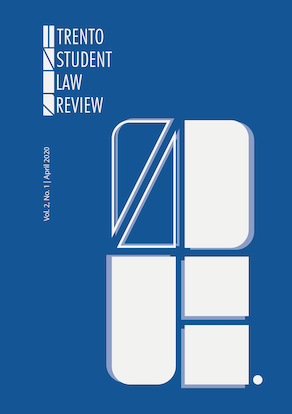Home Confinement in the United States: The Evolution of Progressive Criminal Justice Reform
DOI:
https://doi.org/10.15168/tslr.v2i1.652Keywords:
Home confinement, House arrest, Criminal law, Recidivism, PrisonAbstract
Home confinement, also known as house arrest or home detention, first appeared in the United States in the 1970s as a form of pretrial release issued after a defendant's indictment. Today, this alternative sentencing scheme possesses several additional purposes. Home confinement is imposable as a form of supervised release from incarceration and as a term of parole. More importantly, it has evolved into a condition of probation and an autonomous criminal sanction that serves in a capacity independent of probation. This article aims to show that although historically spurred in large part by the practical deficiencies of the American prison system (namely its overcrowding and excessive costs), the study of home confinement actuation promulgates a broader understanding of its effectiveness in the promotion of rehabilitation and the prevention of recidivism. Psychological and fiscal aspects will be analyzed with domestic and international (New Zealand) considerations. Concurrently, this paper draws attention to the margin of judicial discretion afforded in shaping individual home confinement implementations, and discusses its advantages and related concernsDownloads
Published
30.04.2020
How to Cite
Aloyan, Markus. 2020. “Home Confinement in the United States: The Evolution of Progressive Criminal Justice Reform”. Trento Student Law Review 2 (1). Trento, Italy:109-36. https://doi.org/10.15168/tslr.v2i1.652.
Issue
Section
Articles
License
The copyright on the texts published in the Trento Student Law Review remains with the respective owners. The journal allows authors to retain publishing rights without restrictions.
The Trento Student Law Review is distributed under a Creative Commons license Attribution - Noncommercial - Share-alike 4.0 International (CC BY-NC-SA 4.0).





